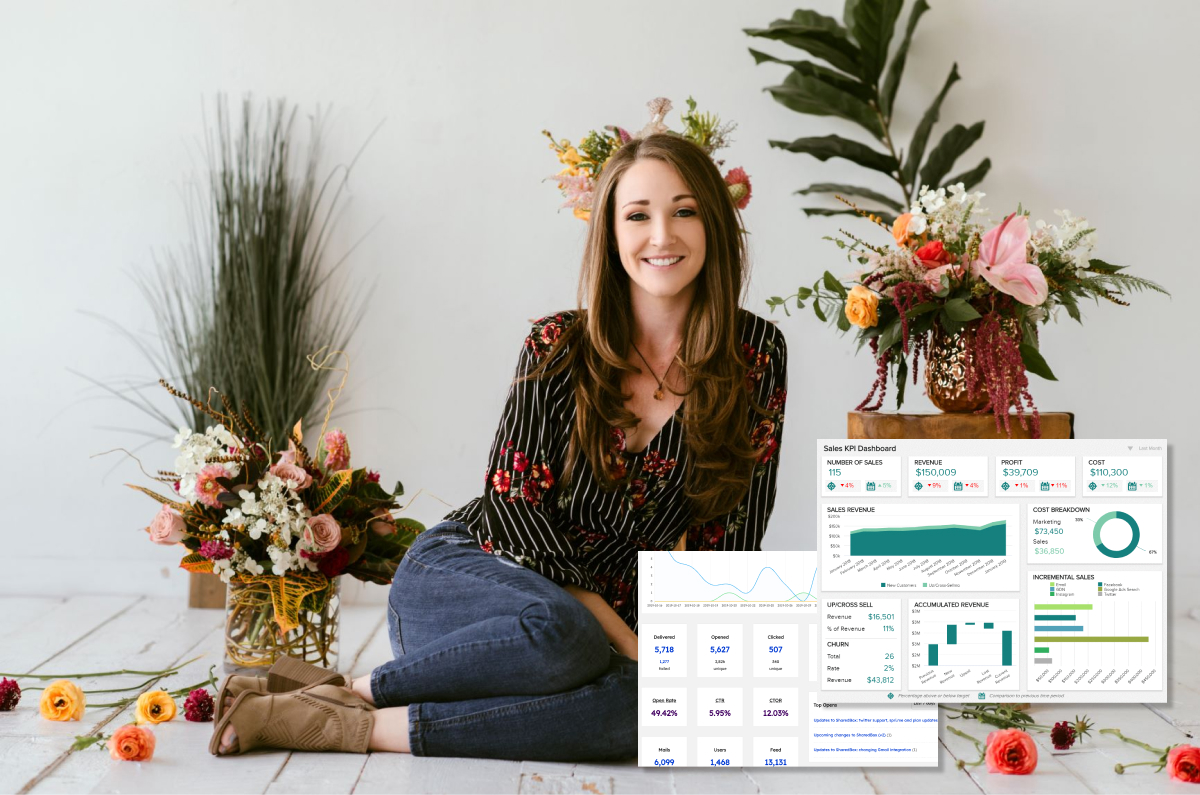Leveraging Business Intelligence Reporting to Win In 2020
Long gone are the days when spreadsheets remained the primary solution for a serious business looking to accurately analyze and utilize all the business information gathered. When it comes to data collection and analysis, big data does perform an increasingly crucial role, especially within such an ever-evolving digital era.
That’s also where business intelligence reporting comes into play – and, indeed, is proving pivotal in empowering entrepreneurs to collect data effectively and transform insight into action. No matter which niche or industry your business is in, business intelligence reporting will probably offer a cutting-edge solution to help you develop a comprehensive intelligent reporting practice as well as ignite your corporate profitability.
Before adopting business intelligence reporting, let’s delve deeper into its key features and real merits to see whether it’s actually worth your effort and – more significantly, to explore the best ways to leverage its function to be “riding on the crest of a wave”.
Business Intelligence Reporting: A Brief Overview
Getting to know the basics is always a great starting point, particularly for those who are still vague as to such new concepts.
What is business intelligence (BI)?
To put it simply, Business Intelligence is a system of various solutions – tools and methods – that allow businesses to collect, observe, and present data as well as garner insights from different types of data already obtained.
Employing BI, you will be able to source data from several external and internal systems, assemble the data for analysis, generate and execute queries against the collected data to create reports and dashboards for decision-makers. Driving business decision making remains the primary use of BI and is accomplished by utilizing different techniques to understand historical, live, and predictive data.
Why do you need business intelligence report (BI reporting)?
Business intelligence reporting is the process of gathering data by utilizing different software and tools to extract relevant insights. Ideally, through such a process, wise data-driven suggestions and observations – for instance, as to business trends, will be “rendered”, empowering decision-makers to act accordingly.
In nature, reporting is a foundational part of business intelligence that focuses on visualizing data in distinct types of visualizations such as tables, graphs, and charts. Visualizations within the context of reporting refer to a graphical representation of data – the goal of which is to accurately present information in a form that is digestible to end-users.

In former times, visualizations developed for the purpose of reporting remained virtually static, which means data could not be manipulated on the visualization itself. Since the needs of businesses have changed over time, so too has reporting evolved. These days, with the constant flux of the entrepreneurship world, more and more interactivity has become essential to executives needing to make business decisions on the fly.
Data manipulation – like drilling down to various semantic layers of data, slicing and dicing of information through sorting and filtering, and a vast array of others, which in the past was reserved only for technically adept data analysts and scientists – can now be put in the hands of non-technical end-users either through an external tool or within an application itself.
With the aid of digitalization trends, there are more and more advanced reporting systems allow for paginated or pixel-perfect reports – as well as a myriad of delivery methods meant to make development teams and administrative staff’s life easier. To make it clearer, paginated reports are reports that are separated into different pages allowing them to be easily printed. Pixel-perfect reports are ones where each individual element of the report can be customized down to the pixel level in both size and location, and are often used for situations which require detail perfect reports – for instance, tax or regulatory documents.
Another attractive aspect of BI reporting is its ability to deliver reports in a variety of different formats, such as the ability to export to .pdf, .csv or excel, send via email, or upload to FTP as well as many others. The ability of scheduling reports to run at a given time or time period is also an outstanding feature, allowing teams to launch and send them without manual creation or intervention.
Furthermore, report bursting is another essential quality of business reporting. A single report can be sent to multiple users with different levels of data permission allowing them to receive a report customized to the data they are allowed to see. In fact, such functionality does save much time and effort required to draw up individual reports for every person with a different permission set.
Business Intelligence Reporting: Key Benefits
Actually, any business intelligence goal should be defined as enabling the ability to see, analyze, understand, and make critical decisions on data. Similarly, the goal of business intelligence reporting is to enable end-users to observe detail level data in a way that that can be easily accessed, interpreted as well as present actionable insights.
So, let’s take a deeper look to see how it actually works!
Benefit #1: Speeding Up Your Workflow
In practice, the process of preparing a comprehensive report can take days. As managers, employees, and important stakeholders can be stuck waiting during such a period, the overall workflow will be slowed down. Analysis cannot be done, decisions cannot be made, and the whole business is negatively affected.
Centralizing all the data sources into one single place, with data connectors that can provide one point of access for all non-technical users in a company, is one major benefit business intelligence reporting will probably offer. The data-driven world does not have to be overwhelming, and especially with the adequate BI tools, the entire process can be easily managed with just a few clicks.
Another noteworthy aspect to take into account is its great ability to visualize data. Since humans process visual information staggeringly 60.000 times faster than text, the workflow can be significantly boosted by utilizing smart intelligence in the form of interactive, and real-time visual data. Each information will be gathered into a single, live dashboard, which will ultimately secure a fast, clear, simple yet effective workflow. This kind of report will not only become visual and easily accessed but also remain steadfast in gathering insights.
Benefit #2: Utilizing Both Real-Time & Historical Data
With traditional means of reporting, it is relatively challenging to utilize and comprehend the vast amount of gathered data. Creating a simple presentation out of voluminous information can be a daunting task even for the most experienced managers or executives.
This concern can be addressed with BI reporting. To be more specific, reporting in business intelligence is a seamless process since historical data is also provided within an online reporting tool that can process and generate all the necessary business information. In addition, artificial intelligence and machine-learning algorithms used in those kinds of tools can foresee future values, identify patterns and trends, and automate data alerts.
One more crucial factor to consider is its possibility to leverage real-time data. In fact, the amount of sophistication that reporting in BI-based projects can achieve cannot be compared with the traditional ones. Understandably, a report written as a word document will not present the same amount of information and benefit as the real-time data analysis, with implemented alarms that can forewarn about any business anomaly. Such a kind of support software will not only foster business efficiency but also decrease costs to a notable extent.
Also, there is no need to establish a whole department to manage and implement this process – numerous presentation software, namely Google Slides, Apple Keynote, Microsoft Sway, can help on the way!
Benefit #3: Facilitating Customer Analysis & Behavioral Prediction
Undoubtedly, there is no single business in the world which has no focus on their customers. As a rule, they are ultimately the ones who do provide revenue and define if a business will survive the market or not.
Within such a crowded marketplace of today, modern customers have become more and more selective towards buying and deciding which brand should they trust. While making any buying decision, customers give equivalent weightage to the quality of the product and their experience of making the purchase. Actually, they not only purchase goods for necessities but also because of their emotional desire. Thus, they prefer brands that can “resonate between perceptual product and self-psychological needs”. By studying customer’s behavior in various stages of the buying cycle, big data analytics has enabled businesses to improvise the customer experience they offer.
So, what does this mean? Should you be able to tackle into their emotional needs and hopefully predict their intention and behavior, you will grasp the wisest ways to stimulate purchase and deliver a smooth customer experience. And luckily, business intelligence reporting is going to be your perfect solution – by leveraging big data, BI-powered reports can combine those resources and provide a stimulating user experience. The key is to gather information and adjust to specific user needs and business goals, as illustrated in the following picture.

With the aid of technological advancements, there exist numerous ways in which a specific business can interact with their target customer: Social media channels, emails, chatbots, or direct interaction – the possibilities are endless. As a result, the increment of these kinds of engagement has increased the number of communication touchpoints and also sources of data. All of the information collected can provide a holistic overview of the customer, evaluating why a certain strategy worked or failed, connecting the cause and effect of customer service reports, and, thus, fostering better business operations.
Benefit #4: Operationally Optimizing & Forecasting
When it comes to measuring and evaluating the success of a company at reaching its operational and strategic goals on different performance aspects, entrepreneurs usually refer to what’s so-called KPI or Key Performance Indicator. KPIs can be high-level, monitoring the global performance of a business, or more low-level, focusing on processes’ or individual’s performance. No matter which field or niche you are in, KPIs are more than vital to grasp the status of your business to make the right calls.
Nonetheless, whereas there are countless KPI examples to select and adopt in a strategy, it isn’t always easy to find the right ones that will fit your department or activity. Business intelligence and reporting are not just focused on the tracking part, but do cover forecasting based on predictive analytics and artificial intelligence, “empowering” you to avoid making a costly and time-consuming business decision. Business intelligence reporting is, therefore, highlighted from multiple angles that can provide insights that can otherwise stay overlooked.

Benefit #5: Fostering Informed Strategic Decision-Making
Whether you’re a CEO, a manager, or an executive managing a small team, with great power comes great responsibility. As someone with corporate seniority, you will need to formulate crucial strategies as well as make tough decisions that have a significant impact on the business. Naturally, decisions and initiatives of this magnitude aren’t to be taken lightly – that’s where business intelligence reporting tools come in.
As concerns senior decision-making or strategy formulation, it’s a prerequisite to use digital data to your advantage to guide you through the process. Business intelligence reporting dashboards are intuitive, visual, and provide a wealth of relevant data, allowing you to not only identify potential market strengths or weaknesses but also spot trends and uncover groundbreaking insights with ease.
Should you need to streamline your budget, put together a targeted marketing campaign, enhance an internal process, or anything else you can think of, leveraging BI will grant you the ability to make swift, informed decisions and set actionable milestones or benchmarks based on solid information.

Besides, the customizable nature of modern data analytic BI stools means that it’s possible to create dashboards that tailor to your exact needs, goals, and preferences, accelerating the senior decision-making process remarkably.
Benefit #6: Substantially Improving Data Quality
One of the most clear-cut and super-powerful advantages of data intelligence for business is the fact that it empowers the user to squeeze every last drop of value from their data!
Within such a constantly-changing digital business landscape where new data is created at a rapid rate, understanding which insights and metrics hold real value is definitely a minefield. With so much information and such little time, intelligent data analytics seems like an impossible feat.
To put this incredible benefit into a practical perspective, it’s imperative to consider the core features and functions of modern BI-centric reporting dashboards:
- Non-restricted data access
Typically, cutting-edge data intelligence dashboards are accessible across a broad range of mobile devices for non-restricted 24/7 access to essential trends, metrics, and insights. This makes it possible to arrive at informed data-driven decisions anytime, anywhere, boosting productivity in the process.
- Data Purity
As modern business intelligence reporting tools operate adopting highly-visual and focused KPIs, you can attend to your data, ensuring that the metrics you’re served are 100% relevant to the ongoing success of your business.
In fact, such intuitive tools work as incredibly effective data curation and filtration systems. Thus, you can rest assured that your decisions will be accurate, and you will never waste time on redundant data again.
- Organizational inclusion
It’s worth noting that today’s dashboards are inclusive and improve the overall value of your business’ data.
The accessible, seamless functionalities of BI-based reporting tools mean that you don’t have to be technically-minded to reap the rewards of data intelligence. As it’s completely possible to customize each dashboard to the specific needs of your user with ease and extract meaningful insights from a wealth of dynamic KPIs, everyone within your company can improve their direct performance with data analytics – something that will definitely benefit the entire organization enormously.
- Data storytelling capabilities
Scientifically proven, human brains are wired to absorb compelling narratives. Should you be able to share an inspiring yet relevant story with your data, you can deliver vital information in a way that resonates with your audience, whether it’s employees or external stakeholders. And fortunately, business intelligence reporting dashboards have such a narrative-forming power.
Benefit #7: Streamlining Your Procurement Processes
This turns out to be another undeniable benefit of business intelligence reporting in the modern age!
If your BI-based reports are arranged in a digestible format, they will possibly offer access to logical patterns and insights, enabling you to make key areas of your business more efficient. This is particularly true if you deal with a fast turnover of goods or services. And if this is the case, it’s more than likely that your company has some form of a procurement department. Beyond any doubt, your procurement processes are vital to the overall success and sustainability of your business, as its functionality will filter down through every core facet of the organization. So, how business intelligence reporting can help?

Actually, it will lend you a hand to streamline your procurement strategy by offering clear-cut visualizations based on all key functions within the department. Working with interactive dashboards will empower you to summarize your procurement processes’ activities with confidence, which, at the same time, will allow you to catalyze your success while building brand awareness. In such a competitive digital era, brand awareness is priceless to the continual growth of your organization.
Benefit #8: Assist Human Resources & Performance Management
There goes without saying that employees are the lifeblood of every single business and yours is not an exception! If the talent within your company is suffering, your business will, too – thus, keeping your staff engaged and motivated is vital. But again, the question is how can business intelligence reporting help with employee engagement and motivation?
By gaining centralized access to dynamic visual data on performance-based KPIs, it’s easy to identify trends in productivity, compare relevant metrics, and hone in on the individual performance. When acknowledging these HR insights, it’s also possible to arrange training as well as support to your staff where needed, while implementing leader boards to inspire everyone to work to the best of their abilities.
Offering your employees tailored support and growth opportunities, showing that you do care, and providing added incentives will help you to boost their motivation exponentially.

Some HR-based employee dashboards available do offer the opportunity to drill down into essential key performance indicators, including attendance rates, productivity, training costs, and overtime hours accrued – all invaluable insights for sustainable performance management initiatives.
After all, grasping the insights to manage internal talent at your disposal plays a pivotal role in employee performance and motivation. The ability to interact with focused employee data will empower you to map out wise strategies that boost performance, employee satisfaction, and internal cohesion in a way that gives you an all-important edge on the competition.
The Bottom Lines
Regardless of industry or niche, there is no single business that is not currently affected by data. Within today’s digitally-driven world, whereas garnering data is essential, analyzing the data gained to its optimum capacity is even more crucial.
Unless you wish to be left behind by your competitors, it’s a “must” that you adopt business intelligence reporting – to obtain the underlying figures, uncover the hidden insights, foster major decisions and reap the rewards you deserve!









